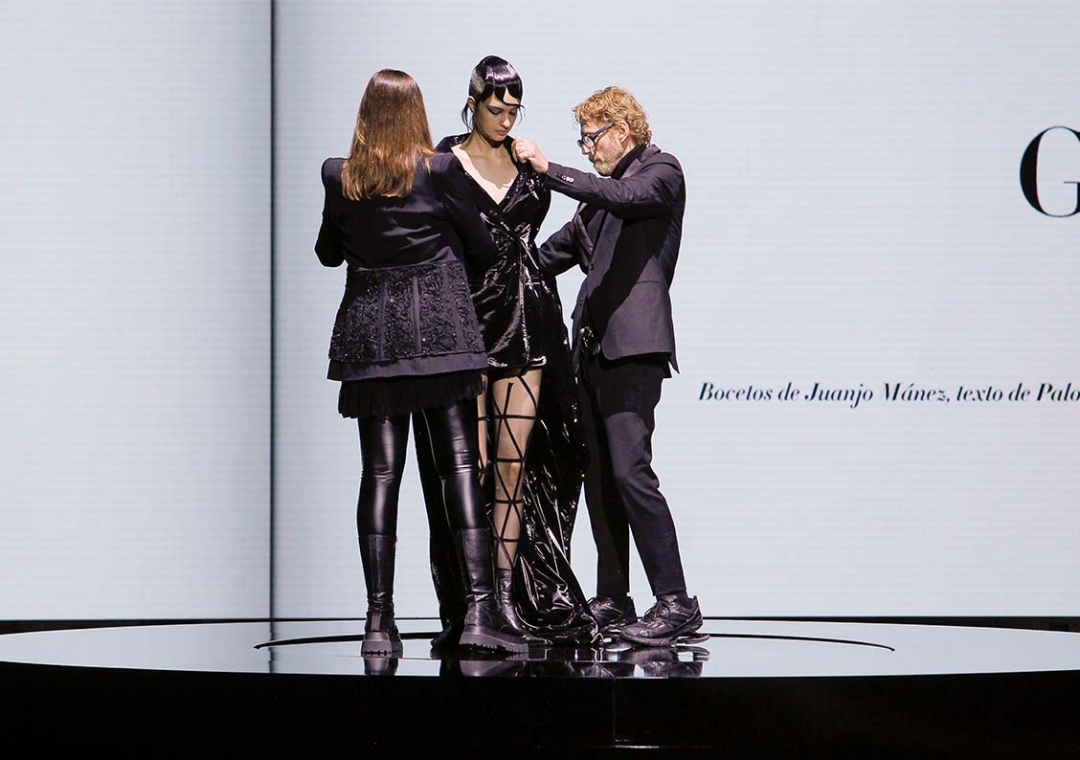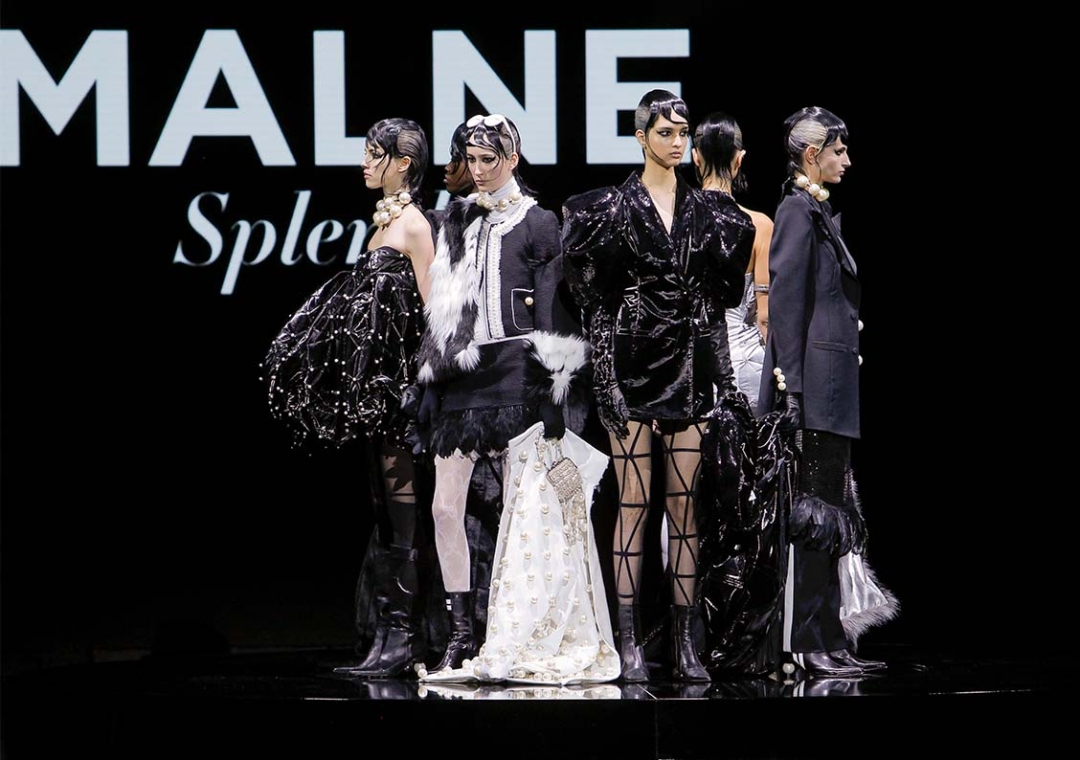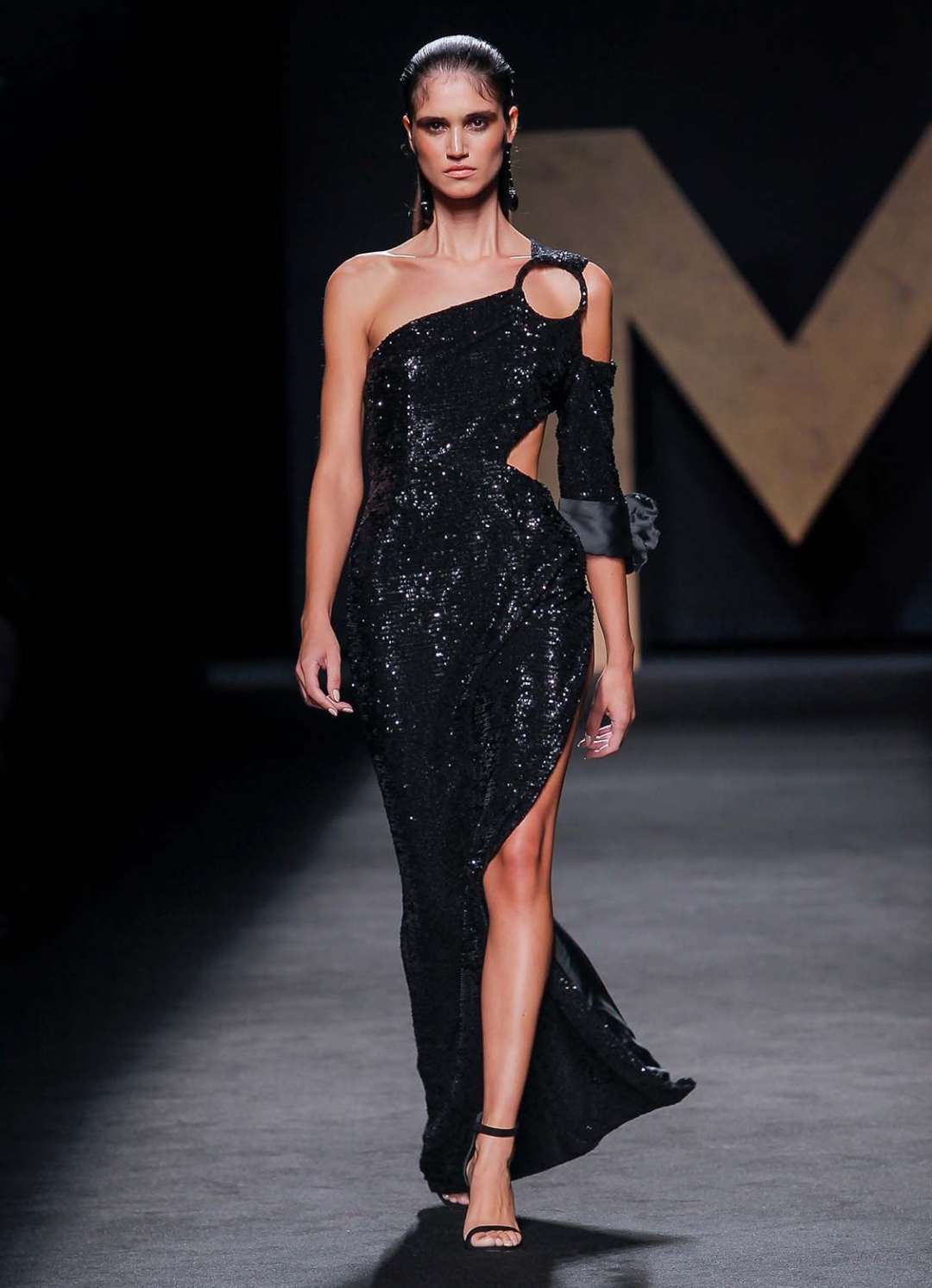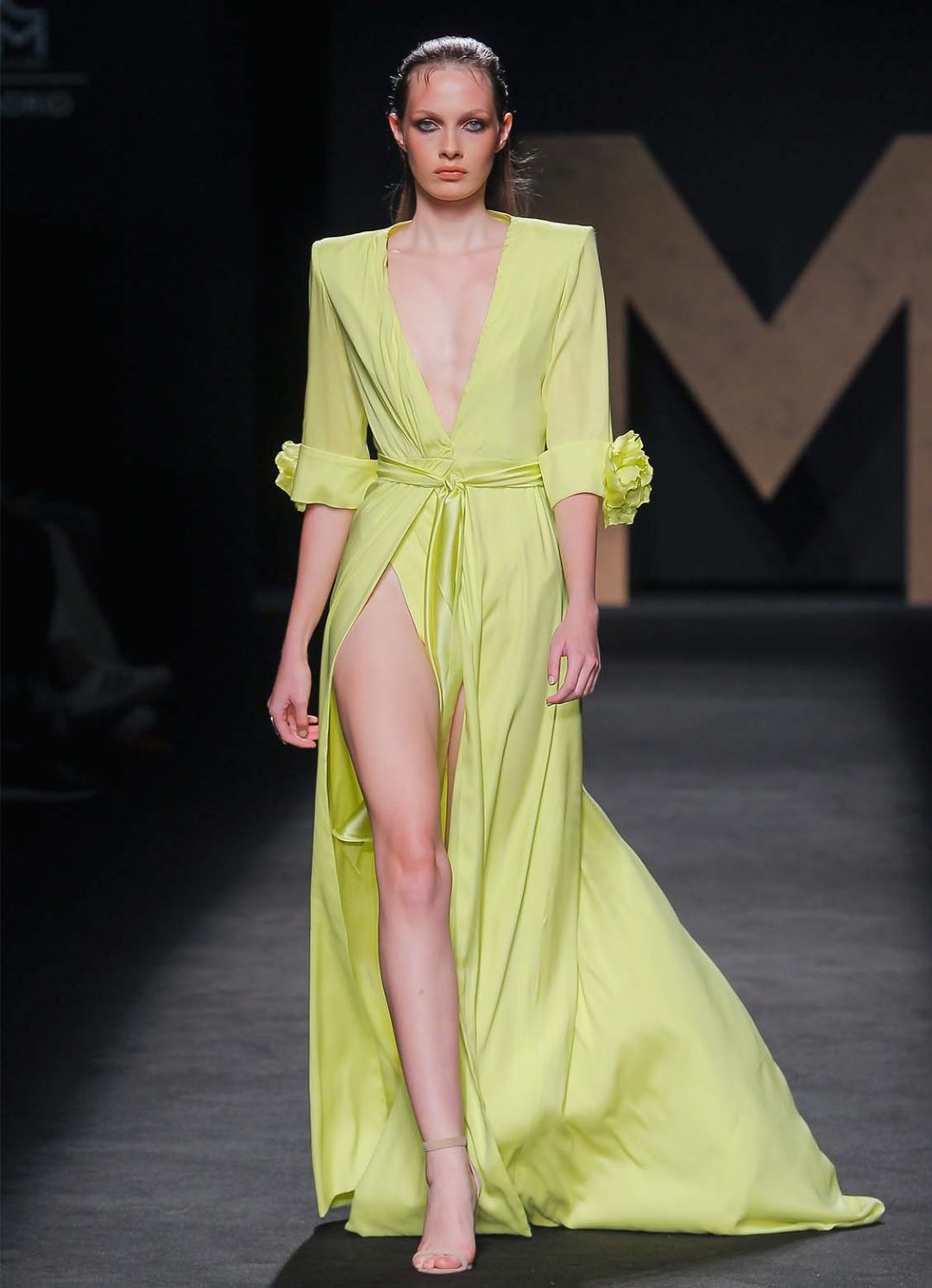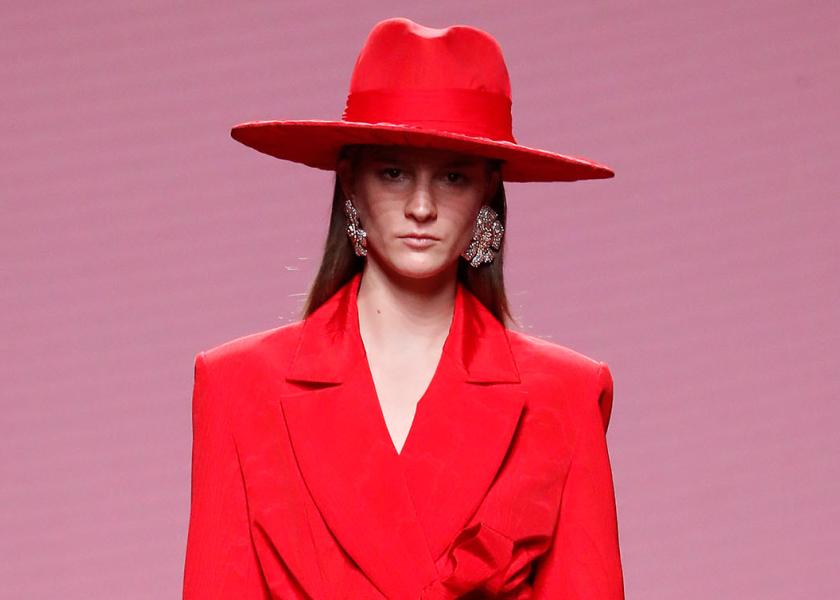MALNE
The metamorphosis of Paloma and Juanjo
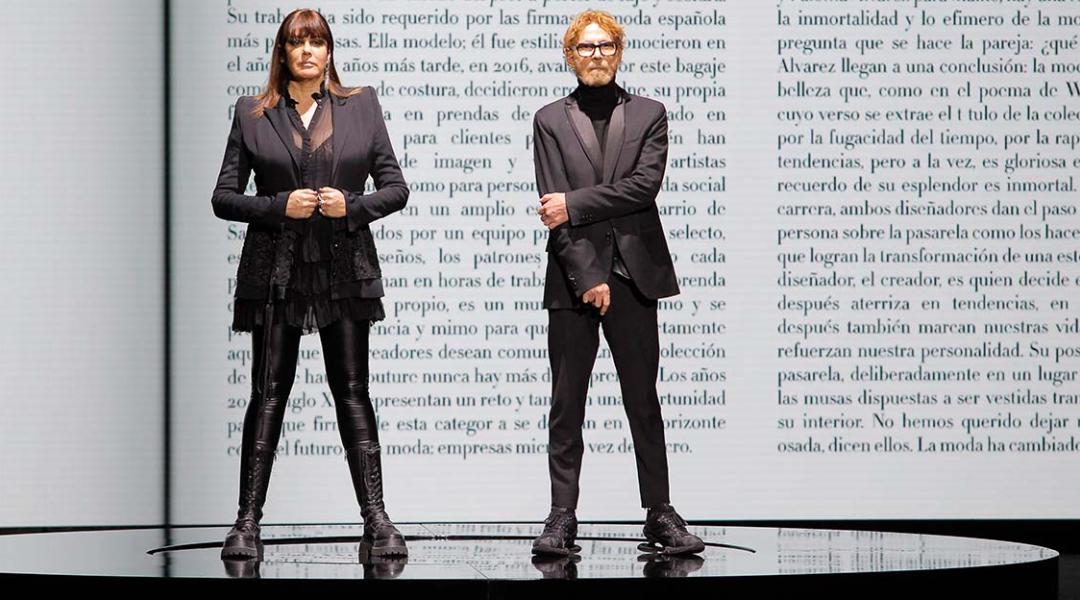
MALNE is Paloma Álvarez and Juanjo Mánez, two Spanish fashion artists who don’t know how to sew a button —in their own words—, but understand haute couture like no other. They’ll be presenting their new 2023 Spring/Summer collection at the 76th edition of Mercedes-Benz Fashion Week Madrid (MBFWM), and have given us a bespoke spoiler: “It’s related to metamorphosis, to the idea of rebirth.”
As firm believers of fashion always vibing at a frequency that looks towards the future, to get to know MALNE well, we also have to look back. Just enough to know that Paloma used to wreck her siblings’ clothes to give her Nancy doll a good wardrobe, or that Juanjo, banned by his parents, could only draw fashion sketches at night. Today they open the doors to their imposing atelier willing to debate —and agree on— every answer. In fact, when we ask them about the most malnian colour, fabric, or garment, they’re unable to narrow it down, but after a while they agree that their most iconic creation is the paradoxical “tuxedo dress”. Message received: you can’t dam up creativity.
In 2016, after years working in fashion, you decided to create your own brand. What pushed you towards this decision?
Since 2002, we collaborated on a common project (Fashion Stories), where we worked for other designers and magazines. Until in 2008, during the recession, we realised that we were making a product with haute couture finishes and those who hired us didn’t know how to convey it commercially. Also, we started to encounter regular Saint Laurent women, for example, who were increasingly afraid of getting to a party and seeing someone wearing the same design. Luxury was becoming globalised, and they still wanted exclusivity. First, we started to cover that space without the brand, but we soon got a project going that, without labels, was slow fashion and bet on local production, artisanship, and limited-edition collections, as well as unique pieces.
Has that philosophy changed, or has it remained intact?
It hasn’t changed because it’s based on a business plan. A brand isn’t something just because it suddenly says it is. We’re amused by brands that declare that they’re slow fashion... If you manufacture in China or supply loads of franchises throughout Spain, it’s impossible to be a slow fashion brand. MALNE is a business plan created by two artists, turning an idea and a work ethic into numbers.
“We had a revelation: gender was dead. We saw young people dressing in a way that completely diffused gender norms”
And fashion? Do you think it’s changed a lot in recent times?
The same year we launched as a brand we went to the Paris Fair and, one day, while standing in front of a statue of Joan of Arc, we had a revelation: gender was dead. We saw young people dressing in a way that completely diffused gender norms. This change is actually palpable and will expand. Fashion is vanguard, and often times represents a social vanguard.
Which is the greatest lesson fashion has given you to date
Self-recognition. The opportunity to know who we are and that we can achieve our dreams.
Any emerging or consolidated talents that have surprised you?
Fashion, despite being fantasy, must be true and must have a heart. When we met Alejandro Gómez (Palomo Spain), we quickly connected because he is his creations. He dresses like that and conveys a message that knows no boundaries. He invented a concept.
MALNE is an impeccable combination of your surnames. Do you work just as well together?
As if we were one. We’ve been friends for a really long time and even before meeting we shared an aesthetic vision and a really similar fashion culture. Occasionally, when we don’t agree —5% of the time at most— we come back to this phrase: “We’ll see eye to eye in the end.” Intuition also brings us together. We’ve guessed trends that have then emerged.
Which do you think is each other’s greatest talent?
Paloma’s is clarity, and Juanjo’s, without a doubt, spontaneity.
Do you split tasks between you, or both do everything?
We’ve spent many hours working together and, from inspiration to conception of the show, outfit by outfit, everything is based on constant dialogue. The only exception is that Juanjo is in charge of turning designs into sketches —it comes naturally to him— and I understand more about the relationship with social media. Between the two of us we cover everything we need to head an haute couture business in the 21st century.
“Garments have many lives, and they have to be perfect throughout their journey”
Please explain the creative process behind designing a collection.
First, we document, chose the fabrics, the suppliers, decide which type of structures to create, define the characters, and once we’ve built the idea, we start to select colours design by design. When we have the sketch, we talk to Manuel, our workshop manager, and Manuel becomes God in there. We tell him what the team needs to do, and he conveys it to them. They execute it, stitch the piece and, when we get it back, we analyse it again. We often restyle it directly on the mannequin. Garments have many lives, and they have to be perfect throughout their journey: on the pattern table, on the model, and in the wardrobe of the women.
What’s a must in your designs?
Glamour, fun, and comfort, but inner comfort. Also, couture and precision —we’ve chosen to work with good tailors— with thought behind it, with meaning. We have an identity and that’s our seal.
Makeup, hair, music... Is there anything about the fashion show that eludes you?
We’ve both been fashion editors at magazines like Vogue or Elle, we know how to design, and we’re creative directors. We have a professional background that allows us to cover everything, and we want to do it. We’re fashion artists.
Ever since MALNE has been MALNE, you haven’t missed a MBFWM. What does this event mean to you?
It’s the runway where we’ve grown professionally and is the best there is in Spain right now. Also, if you intend to sell overseas, they always ask you if you do the most important fashion show in your country.
